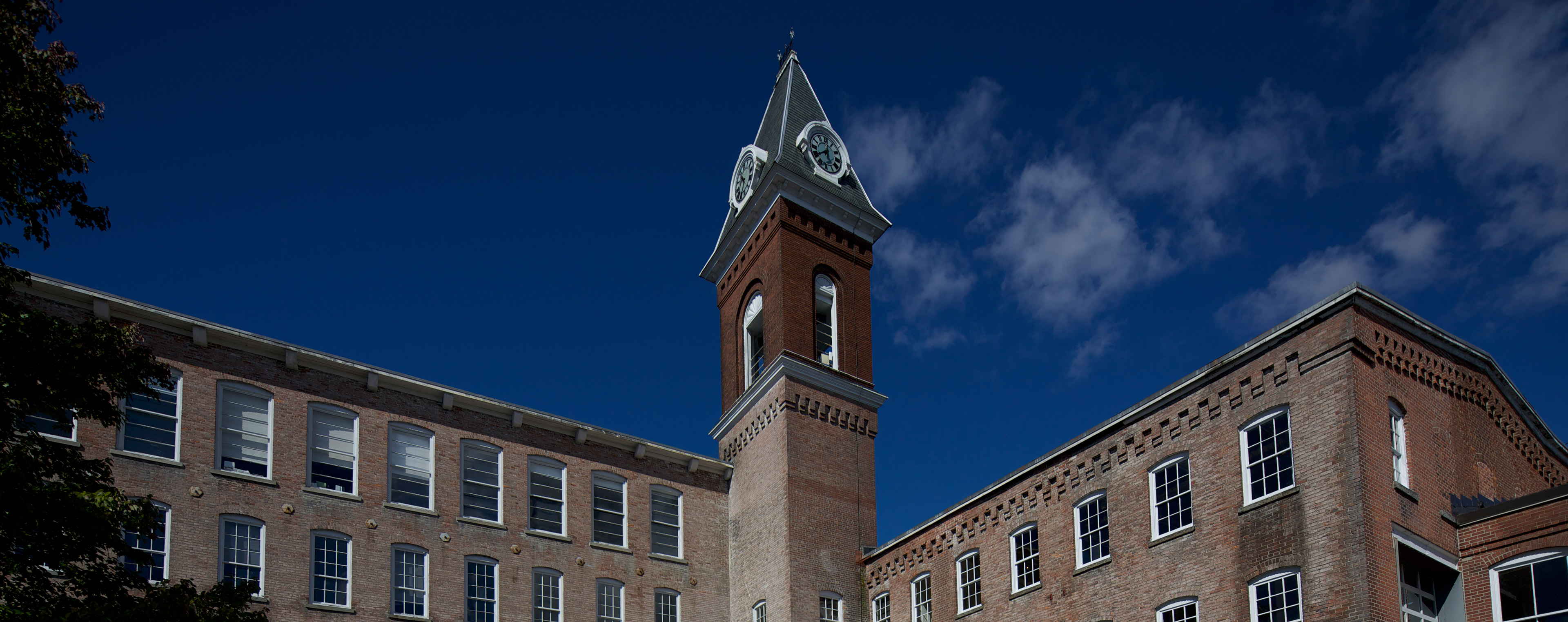 Exhibition
Exhibition- On view now
- MASS MoCA
The comparison of a city’s clock to a person’s heart, though it has been made countless times, remains evocative. When Christina Kubisch first visited MASS MoCA in 1996, she was moved by the fact that the century-old factory clock had not kept time, nor had its bells rung, since 1986, when the Sprague Electric Company vacated the 13-acre site. This 19th-century clock, inside an eighty-foot tower with a 750-pound and a 1,000-pound bell, had set the rhythm of the workday in North Adams since 1895, ringing every quarter hour. Now those bells and beautiful brass clockworks share the tower with components of The Clocktower Project: solar panels, electronic sound system, and a computer with Kubisch’s unique program on its flash disc.
Kubisch felt that the loss of these bell sounds could be as keenly felt as the loss of an important local building. With this in mind, she undertook to restore the clock in a way that would also mark the arrival of contemporary art in the city. A classically trained musician and professor of experimental art, Kubisch began playing the bells like musical instruments, ringing them with their clappers as well as hammering, brushing, and striking them with her hands and various tools. She recorded the bell tone database with a digital audio recorder.
Kubisch then placed small solar sensors in a band encircling the tower just under the bell window. The sensors relay information about the intensity and location of the sun to a computer inside the tower. A unique software program, designed for this project by Berlin engineer Manfred Fox, interprets the solar information and combines Kubisch’s pre-recorded bell sounds in response to light conditions. Thus, a sunny summer morning generates loud, distinct, metallic tones, while a gray afternoon in winter brings about softer, somewhat melancholy sounds. At noon and 5pm, the computer plays a short pre-set concert, but at other times the brief compositions change with the quality of light and time of day. This use of unpredictable changes in the weather, coupled with an algorithmic function in the program that prevents the mini-compositions from repeating, marks the influence of the American composer and artist John Cage on Kubisch’s work.
The fading daylight, registered by the solar panels, causes The Clocktower Project to fall silent in the evenings. At the same time, the four faces of the clock begin to glow faintly and remain illuminated through the night. Kubisch coated the 4′-diameter clock faces with a phosphorescent paint and placed black lights behind the faces. The cool blue-white light quietly marks the transformation of the tower when the bell sounds have ceased.
Kubisch has made a number of hauntingly beautiful synaesthetic works, including The Clocktower Project, that allow her audience to “hear the light,” as she puts it. Many of her recent installations have focused on the transformation of light into sound using solar panels and ultrasonic devices. Kubisch’s thoughtful investigation of the historical sound character of the MASS MoCA site, and creation of a complex, technology-rich work, typifies MASS MoCA’s approach to long-term, site-specific art, all of which are somehow integrated into place and history.
Supported by the Sterling & Francine Clark Art Institute, the Goethe-Institut Boston, the Massachusetts Cultural Council, Mary & Henry Flynt, and Solarex.
![]()


